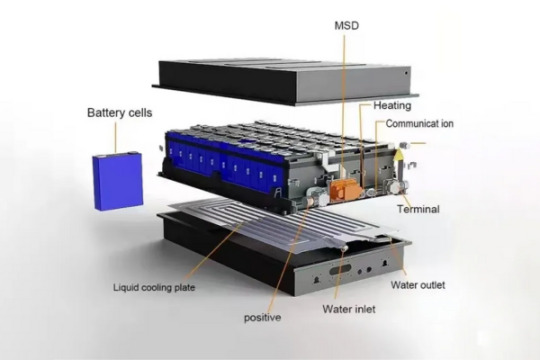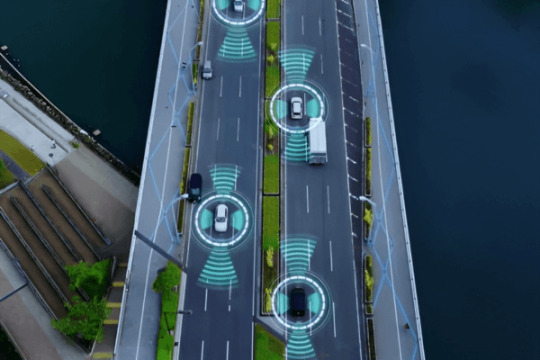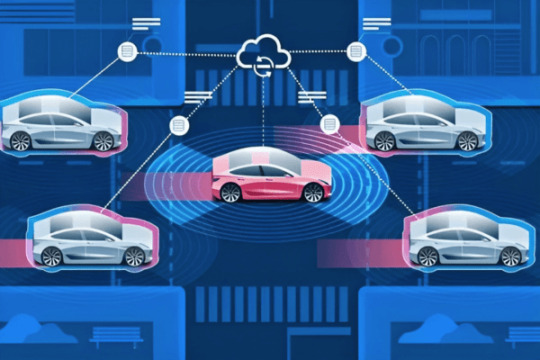#bodycontrolmodule
Explore tagged Tumblr posts
Text
Upgrading Your Vehicle's BCM: Worth the Investment?
The Body Control Module (BCM) in a vehicle is a critical component that controls various electrical and electronic systems. Over the years, automotive technology has advanced significantly, and newer vehicles come equipped with more sophisticated BCMs. This article delves into the question of whether upgrading your vehicle's BCM is a worthwhile investment, exploring the potential benefits and considerations involved. U.S. Mobile Calibrations, a trusted authority in vehicle electronic systems, aims to provide valuable insights to help you make an informed decision.

Understanding the Role of the BCM
a. What Does a BCM Do?
The BCM manages and controls various electrical systems in a vehicle, such as lighting, power windows, central locking, and more. It acts as a centralized control hub.
b. Importance of an Efficient BCM:
A well-functioning BCM is crucial for seamless operation of electronic systems, contributing to the overall comfort, safety, and efficiency of the vehicle.
Potential Benefits of Upgrading Your Vehicle's BCM
a. Enhanced Functionality:
Newer BCMs often come with additional features and improved capabilities, providing enhanced functionality compared to older models.
b. Improved Efficiency:
Advanced BCMs may optimize the vehicle's electrical systems, potentially improving fuel efficiency and overall performance.
c. Integration with Modern Technology:
Upgrading the BCM allows integration with the latest technologies, enhancing connectivity, security, and entertainment features.
d. Customization and Personalization:
Some upgraded BCMs offer customization options, enabling you to tailor settings to your preferences for a more personalized driving experience.
Considerations Before Upgrading Your Vehicle's BCM
a. Compatibility:
Ensure that the upgraded BCM is compatible with your vehicle's make, model, and year to avoid any compatibility issues.
b. Professional Installation:
Upgrading the BCM requires precise installation. It's advisable to have a professional automotive technician handle the installation to ensure it's done accurately.
c. Cost-Benefit Analysis:
Evaluate the cost of upgrading the BCM against the potential benefits it offers. Consider factors like improved functionality, efficiency, and convenience.
The decision to upgrade your vehicle's BCM is contingent upon various factors, including the model and age of your vehicle, your specific needs, and the potential advantages an upgraded BCM can provide. Consult with professionals and consider the potential benefits and costs before making the final decision.
U.S. Mobile Calibrations is dedicated to guiding you through this decision-making process, ensuring that your vehicle's electronic systems meet your expectations and contribute to an enhanced driving experience.
(FAQs) About Upgrading Your Vehicle's BCM
1. What is a Body Control Module (BCM)?
A Body Control Module (BCM) is an essential electronic component in a vehicle that controls various electrical systems, such as lighting, power windows, and central locking.
2. Why should I consider upgrading my vehicle's BCM?
Upgrading your vehicle's BCM can provide enhanced functionality, improved efficiency, integration with modern technology, and customization options, contributing to an upgraded driving experience.
3. How do I know if my vehicle's BCM needs an upgrade?
Consider an upgrade if you're looking for added features, better efficiency, or integration with modern devices. Consulting with a professional can help determine if an upgrade is suitable for your vehicle.
4. Is upgrading the BCM a complex process?
While upgrading a BCM requires precision, it is not overly complex. However, it's crucial to have a professional automotive technician handle the installation to ensure it's done accurately.
5. Can an upgraded BCM improve fuel efficiency?
Yes, an upgraded BCM may optimize the electrical systems in your vehicle, potentially leading to improved fuel efficiency and overall performance.
6. What are some features I can expect from an upgraded BCM?
An upgraded BCM may offer enhanced functionality, better connectivity, improved security features, customization options, and integration with advanced entertainment systems.
7. Are there BCM upgrades compatible with all vehicle types?
BCM upgrades are often specific to vehicle makes, models, and years. It's essential to ensure that the upgraded BCM is compatible with your specific vehicle to avoid any compatibility issues.
8. Can I install an upgraded BCM myself?
While it's possible to install an upgraded BCM yourself, it's recommended to have a professional automotive technician handle the installation to guarantee accurate and safe installation.
9. What is the typical cost of upgrading a vehicle's BCM?
The cost of upgrading a BCM can vary based on the make and model of your vehicle and the specific features of the upgraded BCM. It's advisable to consult with professionals for an accurate cost estimate.
#usmobilecalibrations#adas#ecm#bcm#electroniccontrolmodules#advancedriverasistance#bodycontrolmodule
2 notes
·
View notes
Text
Thermal Management in Vehicle MCUs
July 2, 2024
by dorleco
with no comment
Others
Edit
Introduction

Thermal Management in Vehicle MCUs is an important factor that modern automotive electronics must take into account while building and maintaining their Microcontroller Units (MCUs). The capacity of these components to manage heat is critical to their dependability and durability as cars increasingly rely on electronic control units for a range of functions.
Below is an explanation regarding the Thermal Management in Vehicle MCUs:
1. MCUs’ Function in Vehicles:
MCUs in cars handle several functions, including entertainment, airbags, climate control, ABS, and engine management. These MCUs evaluate massive amounts of data and execute complex algorithms to ensure the vehicle operates safely and properly.
2. MCU Heat Generation:

When MCUs operate, heat is produced by the electric current flowing through their components. An MCU’s processing power and the number of tasks it can perform grow with the amount of heat it generates. Heat can also be produced externally by things like connected sensors or actuators losing power.
3. The importance of temperature control
The following reasons make effective thermal control crucial:
Reliability: Prolonged exposure to high temperatures can reduce the lifespan of electronic components and lead to early breakdown, potentially causing significant system failures.
Performance: MCU performance can be greatly impacted by high temperatures, leading to sluggishness, erratic behavior, or system failures.
Safety: In safety-critical systems (such as braking or steering control), the MCU’s correct operation is essential. Overheating can be harmful to safety.
Fuel Efficiency: Heat generation affects a vehicle’s overall energy efficiency. Effective heat management could be useful to reduce fuel use.
4. Methods of Thermal Management:
Heat Sinks: Heat sinks are methods of passive cooling that divert heat from the MCU. They are made up of metal plates or fins that improve the heat-dissipating surface area. It is possible to directly attach heat sinks to the MCU package.
Fans and Liquid Cooling: To improve heat dissipation even more, active cooling techniques like fans or liquid cooling systems may be employed in certain situations. To remove heat from the MCU, liquid cooling systems circulate a coolant, such as water or glycol.
Thermal Interface Materials (TIMs): To enhance thermal conductivity and guarantee effective heat transfer, TIMs — such as thermal paste or pads — are positioned in between the MCU and heat sinks.
5. Environmental factors to consider:
Vehicle MCUs have to function in a range of weather situations, from extreme heat to cold. These variances should be taken into consideration when designing thermal management systems.
6. Observation and management:
Temperature sensors, which keep an eye on the temperature of important parts like MCUs, are widely found in advanced automobiles. To preserve ideal operating conditions, automated control systems can modify cooling strategies in response to real-time data.
7. Obstacles and Upcoming Patterns:
Strong MCUs are in more demand as cars grow increasingly automated and electric. As a result, controlling heat becomes more challenging in increasingly compact and densely packed electrical systems. New technologies, such as improved cooling techniques and wide-bandgap semiconductors, are addressing these problems.
Thermal Management in Vehicle MCUs Significance
The significance of Thermal Management in Vehicle MCUs cannot be overstated, since it is vital for the dependable and secure functioning of modern cars. The primary arguments supporting the importance of heat control in automotive MCUs are as follows:
Dependability and Durability: Electronic components, particularly MCUs, might have a significantly shorter lifespan due to overheating. Good thermal management helps to keep the operating temperature within reasonable bounds, extending the life of critical vehicle systems and reducing the chance of component failure.
Preventing Performance Degradation: High operating temperatures can lead to performance degradation in MCUs. System crashes, strange behavior, or slow response times are possible outcomes. As long as MCUs are operated within the specified temperature range, appropriate thermal management ensures that their performance capabilities are maintained.
Safety-Critical Functions: MCUs are used in many automobile systems, such as stability control, airbag deployment, and anti-lock brake systems (ABS). Overheating MCUs can impair these systems’ ability to function correctly, which could lead to accidents or pose a safety issue.

Fuel Economy: Cars that have better thermal control use less fuel. Maintaining their optimal operating temperatures helps MCUs and other electronic components work better and consume less fuel and energy.
Consistent System Functioning: Maintaining a stable temperature environment for MCUs enables predictable and consistent system functioning. Temperature variations can affect performance, which can affect the overall driving experience as well as the vehicle’s safety.
Preventing Thermal Runaway: The uncontrollably high temperature of the MCU might occur as a result of extreme overheating. This could lead to a disastrous collapse and present a serious risk to public safety. Heat runaway situations can be avoided with the use of efficient thermal control technologies.
The best performance for advanced features in modern cars depends on powerful MCUs. Examples of these technologies include infotainment systems, advanced driver assistance systems (ADAS), and autonomous driving capabilities. Effective temperature regulation ensures these state-of-the-art features operate continuously and to their maximum capacity.
Thermal Management in Vehicle MCUs Drawbacks:
There are drawbacks and challenges with Thermal Management in Vehicle MCUs, even though it is necessary for optimal performance and reducing overheating. The following are a few drawbacks of automotive MCU heat management:
Cost and Complexity: Installing effective temperature control systems can be costly and time-consuming. Using heat sinks, fans, heat pipes, and other cooling methods increases hardware costs and complicates vehicle electronic systems.
Space Restrictions: In cars, heat management components typically take up a small amount of room. It may be difficult to integrate cooling systems without sacrificing other important parts or cabin space.
Weight: The weight of the vehicle is increased by cooling solutions, which may have an impact on handling and fuel efficiency. To maximize range, electric vehicles’ (EVs’) weight control is far more crucial.
Power Consumption: Electricity is required for fans and other active cooling methods. This could affect the vehicle’s overall energy efficiency, especially for electric or hybrid cars.
Maintenance: Because they are prone to wear and tear, cooling components like fans and heat sinks may require maintenance. Ensuring the long-term dependability of these components is essential to preventing cooling system breakdowns.
Noise and Vibration: Fans and other active cooling systems can produce noise and vibration within the vehicle, which can be uncomfortable for both the driver and the passengers.
Integration Difficulty: It can be challenging to integrate thermal management systems and power distribution and communication networks into the overall vehicle architecture, and this may need additional technical work.
Thermal inertia: Because of this, thermal management systems could not respond to temperature changes right away. Dealing with this lag may be challenging during abrupt temperature changes.

Conclusion:
Lastly, it should be mentioned that modern car design places a high priority on the appropriate heat management of vehicle Microcontroller Units (MCUs). While essential for maintaining the efficiency, dependability, and security of automotive electronic systems, it presents a unique set of challenges and trade-offs. A balance between the benefits and drawbacks of heat management is essential to guaranteeing the general functioning and longevity of vehicle MCUs and the systems they oversee.
However, there are drawbacks to consider, including complexity, cost, restricted space, weight, power consumption, upkeep, and environmental effects. The benefits of thermal management must be carefully weighed against these disadvantages by engineers and automakers. As electrification and autonomous technologies advance, as well as vehicle electronic systems grow more dependent on them, addressing these challenges will become increasingly important.
In conclusion, since thermal management in car MCUs assures the dependability, efficiency, and safety of modern automobiles, its importance cannot be overstated. A crucial aspect of automotive engineering is navigating the trade-offs and difficulties associated with thermal management to make sure that vehicles can withstand the demands of the complex technology systems and environmental concerns of today.
#ThermalManagement#Bodycontrolmodule#evcc#ccu#evse#ProgrammableVCU#Dorleco#VCUSupplier#VCU#Controlsystem
0 notes
Text
VOLKSWAGEN Electric Vehicle ID.4 Central control unit Gateway CCU Module 1EA-937-012 bench tester. https://ecudepot.com/product/1ea937012-test-harness/
1ea937012 #vwid4 #VolkswagenID4 #etron #vwccu #bodycontrolmodule
0 notes
Video
Everything will not always be in abundance but high quality is the goal. Speed and footwork isn’t something you just pick up, it must be studied and digested🏃🏾♀️🐆🏃🏻. - #speed #ladderworkout #sprints #learnnewthings👩🏾💻#bodycontrolmodule #relativity #footplacementiseverything #footworkscientist 🦶🏾 #changeofspeedchangeofdirection #fruitfulfriday #flexflashfriday⚡️ #AstroGang💚🚀#ReadySetNowGoGreen🔋#Grind2DaGreen #G2DG™️ ⛓‼️🌎. 🏷Tag ♥️Like 🤲🏾Share 💬Comment... \_________________/ Turn on post notifications 🔗📳🆓 • Save🔒Share 🤲🏾Tag 🏷 . - REMEMBER A BOND IS PROFIT 💴. • I do not own rights to music @richforever @champagnepapi 🎶. (at Grindlab) https://www.instagram.com/p/B8AZ5l-lWRV/?igshid=z1o5dbe2bnfw
#speed#ladderworkout#sprints#learnnewthings👩🏾💻#bodycontrolmodule#relativity#footplacementiseverything#footworkscientist#changeofspeedchangeofdirection#fruitfulfriday#flexflashfriday⚡️#astrogang💚🚀#readysetnowgogreen🔋#grind2dagreen#g2dg™️
1 note
·
View note
Text
2005 chevy Silverado 1500 (Grand forks) $14000 | northdakota.allembru.com
0 notes
Text
BCM Connectivity and Integration in Connected Vehicles

Introduction:
As a result of incorporating cutting-edge technologies to improve safety, convenience, and the overall driving experience, connected vehicles have completely changed the automobile industry. The Body Control Module (BCM), a central electronic component in charge of managing and controlling numerous systems and functions inside the body of the vehicle, is an essential component of connected automobiles. In order to ensure flawless communication between various car components, external devices, and distant networks, BCM connectivity and integration are essential. An introduction to BCM integration and connectivity in connected vehicles is given in this article.
Body Control Module (BCM):
The BCM, also referred to as the body control module, is the “brain” of a vehicle’s body. It is a key electronic control component in charge of organizing and operating a number of features, such as lighting, climate control, power windows, door locks, wipers, and more. The BCM has developed into a focal point for both internal and external communication in contemporary connected automobiles.
Connectivity in BCM: To improve their functionality, connected cars use a variety of communication technologies, including:
Intra-vehicle BCM connectivity: The BCM interfaces and communicates with a number of vehicle subsystems, including the infotainment system, the transmission control module, and the engine control module (ECM). With the help of this intra-vehicle connectivity, various systems can be coordinated for maximum effectiveness.
External Connectivity: BCMs in connected cars are fitted with interfaces for external connection, such as Ethernet, LIN (Local Interconnect Network), CAN (Controller Area Network), and others. These interfaces make it easier to communicate with networks, sensors, and other external devices.
Wireless Connectivity: BCMs frequently come with Wi-Fi, Bluetooth, and cellular connectivity to support remote connectivity and over-the-air (OTA) updates. This enables automakers to provide software updates, keep tabs on the condition of their vehicles, and provide remote services like monitoring and diagnostics.

Integration is a crucial component of BCM functionality in connected vehicles, which includes:
Sensor Integration: BCMs combine data from a variety of in-vehicle sensors, such as temperature, proximity, and ambient light sensors. The BCM uses this information to make quick judgments about things like adaptive lighting and climate management.
Infotainment Integration: BCMs connect to the infotainment system, enabling users to control connectivity, entertainment, and navigation functions from a single interface. Access to entertainment and information is made simple for users thanks to this connection.
Telematics Integration: BCMs are crucial components of telematics systems, enabling communication from the car to the cloud. Services like remote diagnostics, car tracking for stolen vehicles, and emergency help are made possible by this interface.
ADAS Integration: BCMs can work with radar sensors, cameras, and other ADAS parts to provide functions like adaptive cruise control, lane-keeping assistance, and collision avoidance.
Over-the-Air (OTA) Updates: By integrating with OTA update systems, manufacturers are able to remotely distribute software updates and BCM enhancements, boosting vehicle functionality, security, and performance.
Advantages of BCM Connectivity and Integration in Connected Vehicles
Modern connected automobiles rely heavily on connectivity and integration of the Body Control Module (BCM), which has a number of benefits that improve the driving experience, safety, and general operation of the vehicle. The following are some major benefits of BCM integration and connectivity in connected vehicles:
Enhanced User Experience:
Convenience: Through a user-friendly interface, such as infotainment systems or smartphone apps, BCM integration enables centralized control of different vehicle operations. Drivers may access and handle car functions more easily as a result of the user experience being made simpler.
Vehicle maintenance and diagnostics
Remote diagnostics: BCM connectivity permits continuous tracking of the condition and operation of the vehicle. In order to minimize downtime and potential breakdowns, automakers and service providers can remotely identify problems and proactively plan maintenance or repairs.
Security and Safety:
Theft Prevention: By using BCM integration, enhanced security features like remote car tracking and vehicle immobilization in the event of theft can be implemented, improving vehicle security.
Emergency Services: The BCM can immediately alert emergency services in the event of an accident, providing vital location and collision information to hasten relief.
OTA (over-the-air) updates:

Efficiency in Energy:
Adaptive Systems: To reduce energy consumption, BCMs can connect with a variety of vehicle systems, including lighting, climate control, and power management. This may lead to improved internal combustion engine fuel economy and increased range for electric vehicles.
ADAS, or advanced driver assistance systems
Integration with ADAS: By enabling features like adaptive cruise control, lane-keeping assistance, and automatic emergency braking, BCMs play a critical role in tying ADAS sensors and systems together. These devices enhance driving assistance and safety.
Data Insights:
Data Collection: BCM-equipped connected cars can gather a ton of information about driver behavior, vehicle performance, and road and traffic conditions. To enhance traffic control, safety features, and vehicle design, this data can be examined.
Remote Control and Monitoring:
Remote Start and Pre-conditioning: Remote Engine Start, Cabin Heating/Cooling, and Charging Control via Smartphone Apps: BCM connectivity improves user comfort by enabling remote engine starting, cabin heating/cooling, and charging control.
Vehicle tracking: Vehicle owners have the ability to track their vehicles remotely, which can be handy for fleet managers tracking company vehicles or parents monitoring teen drivers.
Disadvantages of BCM Connectivity and Integration in Connected Vehicles
There are many benefits to connecting and integrating BCMs (Body Control Modules) into connected automobiles, but there are also some possible drawbacks and difficulties with this technology. To achieve a complete comprehension of the subject, it is crucial to take into account the following disadvantages:
Security Concerns:
Cyber security Risks: A car may be more susceptible to hacks the more connected it is. Hackers might take advantage of BCM flaws to take over vital auto systems and possibly cause accidents or car theft.
Privacy Concerns:
Data Privacy: Connected cars gather a ton of information, such as where you are, how you drive, and your personal preferences. There are worries about how automakers, other service providers, or hackers might use, share, or otherwise misuse this data.
Reliability and Complexity:
System Complexity: The complexity of the electronic systems in cars rises as they become more integrated and networked. This complexity may result in greater difficulties in identifying and fixing problems, which could raise maintenance expenses.
Drive while distracted:
Advanced entertainment and networking systems in cars can be distracting for drivers if they are not created with safety in mind. Accidents and decreased road safety might result from this distraction.
Age-old Technology
Rapid technological advancements: The technological environment is always changing. In a few years, what is cutting edge now can become antiquated, potentially leaving vehicle owners with dated equipment.
Insufficient Network Coverage
Rural and Remote Areas: Some linked features may not function as intended in locations with weak or no network connection, which reduces their utility.
Data Overload:
Data Management: Both manufacturers and users may experience data overload due to the large volume of data created by connected automobiles. It might be quite difficult to process and use this data in a meaningful way.
Legal and Regulatory Obstacles:

Conclusion:
In conclusion, BCM connectivity and integration of BCMs (Body Control Modules) in connected vehicles offer a variety of benefits and opportunities that can dramatically improve driving functionality, safety, and enjoyment. These benefits include a better user experience, better diagnostics and upkeep for vehicles, increased safety and security, energy efficiency gains, personalization features, and aid for advanced driver assistance systems (ADAS).
However, it’s important to recognize the potential drawbacks and difficulties brought on by this technology, such as cyber security dangers, data privacy issues, increased complexity, reliance on network connectivity, higher vehicle expenses, and complex regulatory and legal issues. To guarantee that connected vehicles continue to be secure, safe, and considerate of user privacy, it is necessary to carefully analyze these issues and take proactive measures.
As the automotive sector keeps innovating and perfecting BCM connectivity
#BodyControlModule#dorleco#controlsystem#ControlStrategies#stroke#automotive#controlunit#PowertrainControl#Anti-lock Braking System#ADAS
0 notes